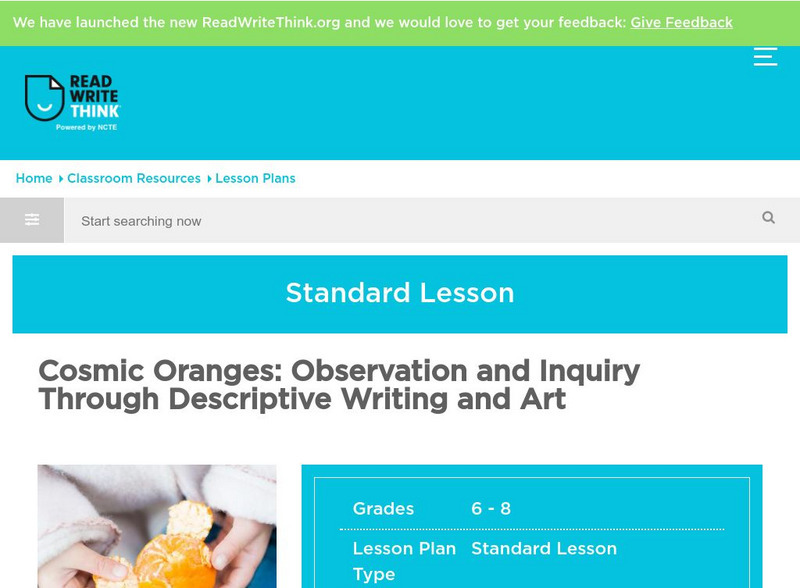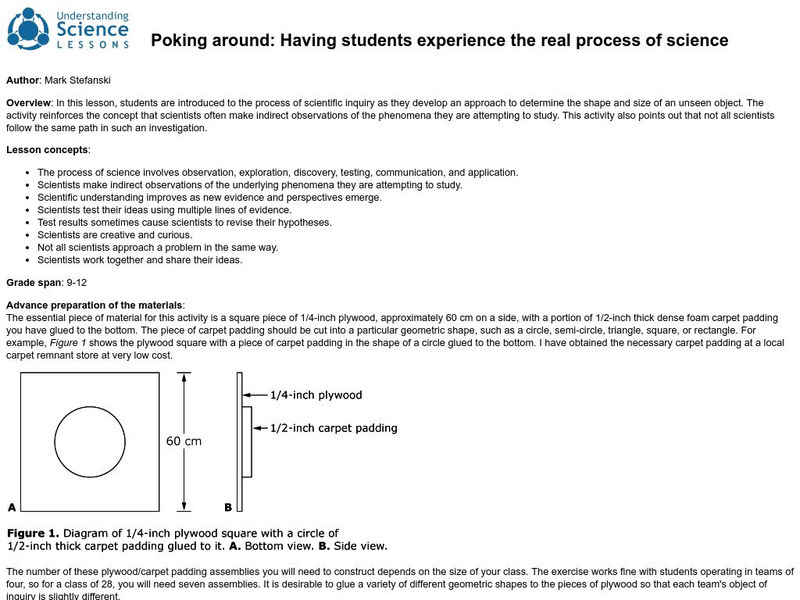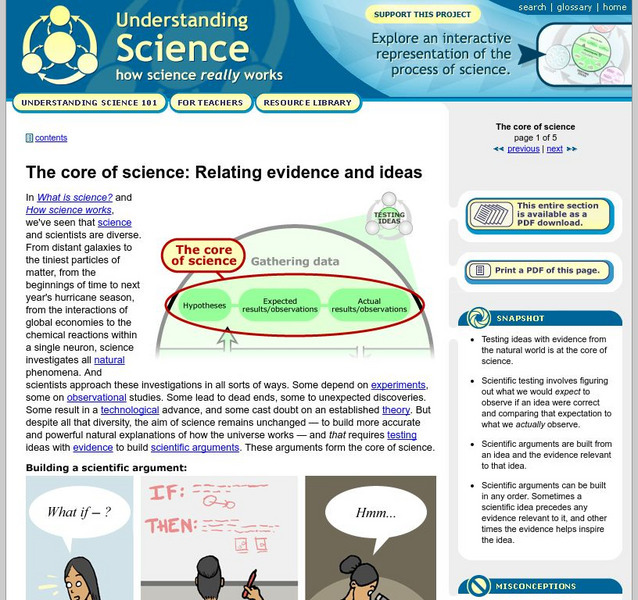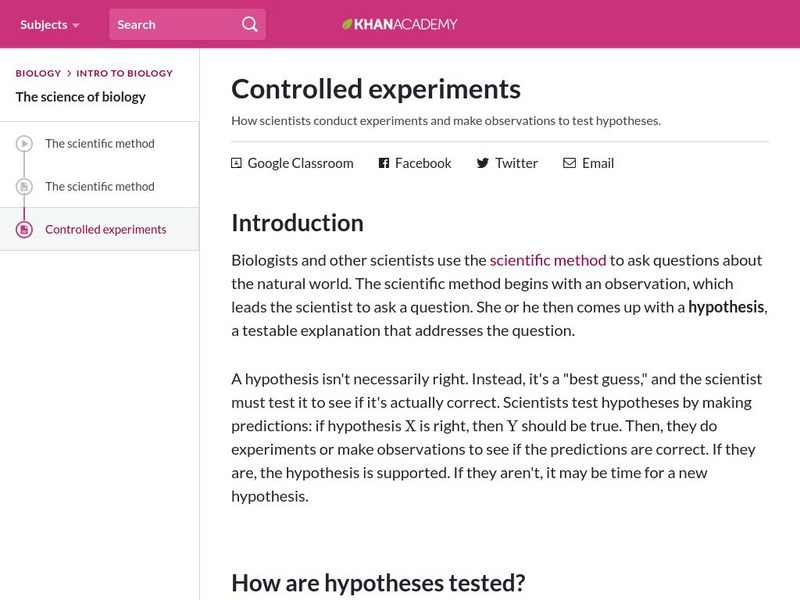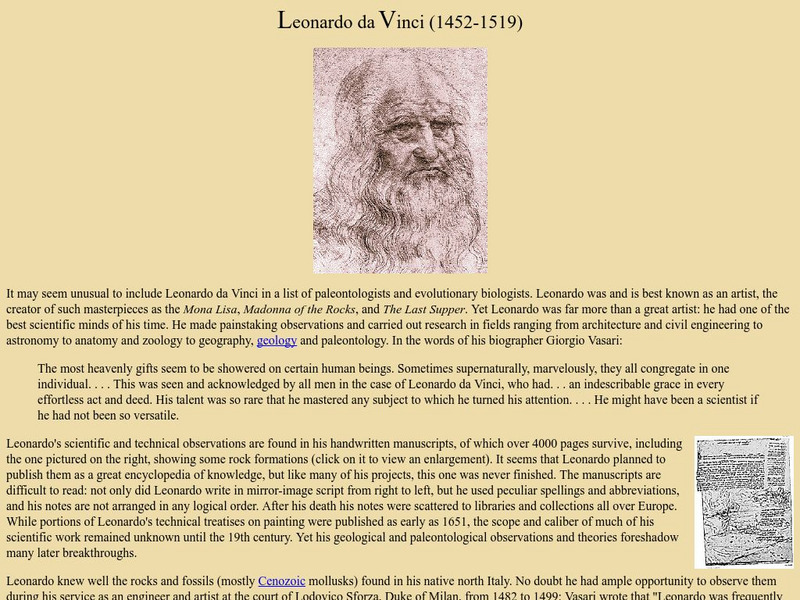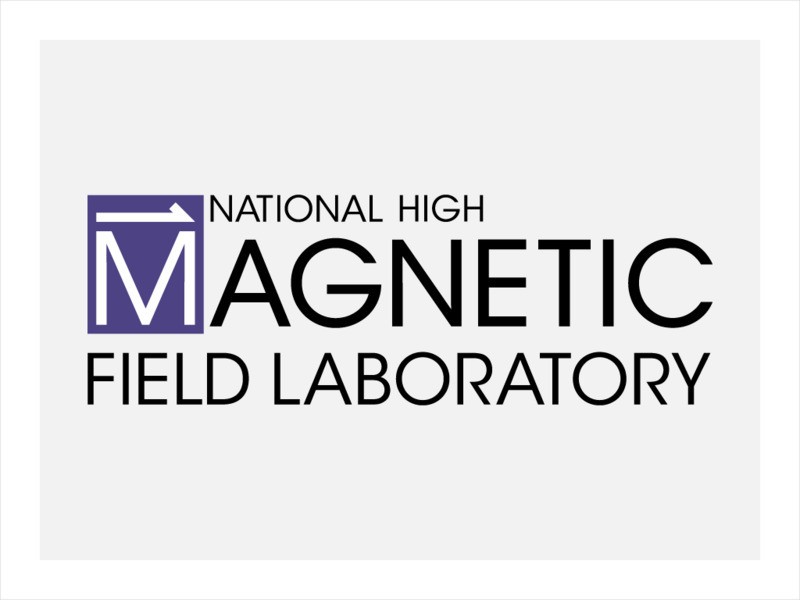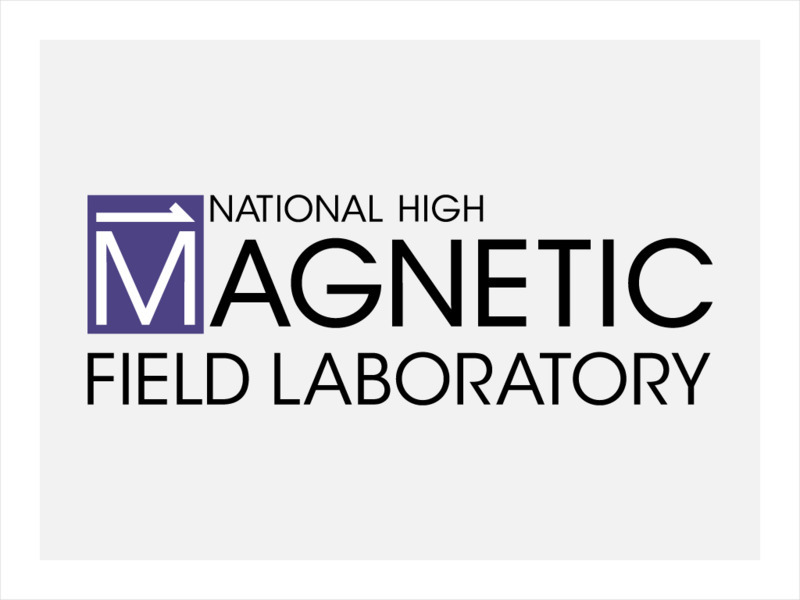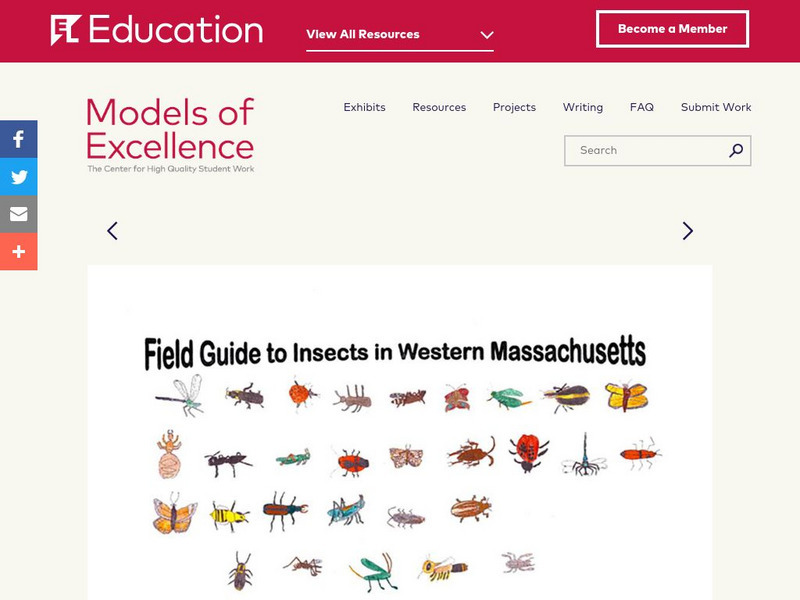Brigham Young University
Byu: Mark Davies: Scientific Methods and Empiricism
These college professor's notes give an overview of empiricism as the cornerstone of the scientific method. It is the approach he uses to analyze linguistic phenomena in class.
Other
Science4 Us: Science Tools
The Tools module introduces students to the tools scientists use for both qualitative and quantitative observations. Students learn to use tools such as their senses, rulers, and balance scales through hands-on activities.
Huntington Library
Huntington Library: Making Community Measurements: Which Plant Part? [Pdf]
A instructional activity in observing a plant or plant community in different seasons for the purposes of recording observable changes.
Famous Scientists
Famous Scientists: Claude Bernard
Read about Claude Bernard, one of the first to suggest the use of blind experiments to ensure the objectivity of scientific observations.
PBS
Pbs Teachers: Scientific American: About All You Can Eat: Feast or Famine
Investigate the theory that including desert plants such as mesquite and cactus in a diet can help control obesity and diabetes. Design a scientific experiment that will test this hypothesis, using control variables, observation and...
ReadWriteThink
Read Write Think: Cosmic Oranges
Contains plans for four 45-minute lessons that ask middle schoolers to use their senses and focus their attention while writing descriptively and observing scientifically. In addition to objectives and standards, this instructional plan...
Smithsonian Institution
Smithsonian Education: Minerals, Crystals, and Gems
Through this series of three lessons, students will gain an understanding of the basics of mineral science. In their investigation they will also work through the scientific process as they practice their observation skills, form...
University of California
University of California at Berkeley: Understanding Science: Poking Around
Students work in groups to develop an understanding of the size and shape of an object hidden beneath a plywood board, asking questions, testing their reasoning, and drawing conclusions, as scientists do. Students are never permitted to...
Nature Conservancy
The Nature Conservancy: Gardens Activity Guide: Habitats
In this instructional activity students learn how the garden provides habitat for a variety of different animal species. They make observations and collect data to determine which species inhabit the garden. They will investigate...
Indiana University
Indiana University: Science vs. Non Science
This mini-lesson at the Evolution and Nature of Science Institute site from Indiana University provides a criteria by which students can evaluate an idea or explanation for scientific credibility.
University of California
Understanding Science: The Core of Science: Relating Evidence and Ideas
Learn that the real process of science proceeds at multiple levels and sorts through many ideas, retaining and building upon those that work, and relating the evidence discovered with scientific ideas.
Alabama Learning Exchange
Alex: Mystery Powder Investigation
During this lesson, students will work individually to identify a mystery powder. Students will have the opportunity to test known powders with different substances and record observations. Students will develop a plan that can be used...
Alabama Learning Exchange
Alex: Chemical Reaction in a Bag
Students will use scientific methods in creating and observing a chemical reaction.
Annenberg Foundation
Annenberg Learner: American Passages: Modernist Portraits: Marianne Moore
Marianne Moore is the focus of this brief biography, remembered for her twentieth century poetry which embraced nature in a scientific sense as well as humanity. See "Marianne Moore Activities" for related materials.
Khan Academy
Khan Academy: Biology: Controlled Experiments
An article that explores how scientist conduct controlled experiments to test hypotheses.
University of California
Ucmp: Leonardo's Contributions to Science
Information about Leonardo da Vinci's observations of the natural world. An insightful commentary on the scientific achievements of the Renaissance.
Science Buddies
Science Buddies: The Effect of Artificial Light on Migration Pattern of Daphnia
This elegant project employs a scientific approach that is particularly valuable in Environmental Science, but can be applied to other areas as well. The approach has three steps: 1) from your observations in the field, form a...
National High Magnetic Field Laboratory
Magnet Academy: Julian Schwinger
Theoretical physicist Julian Schwinger used the mathematical process of renormalization to rid the quantum field theory developed by Paul Dirac of serious incongruities with experimental observations that had nearly prompted the...
National High Magnetic Field Laboratory
Magnet Academy: Heinrich Rohrer
Swiss physicist Heinrich Rohrer co-invented the scanning tunneling microscope (STM), a non-optical instrument that allows the observation of individual atoms in three dimensions, with Gerd Binnig. The achievement garnered the pair half...
Environmental Education for Kids
Eek!: Teacher Resources: Milkweed Check Up
In this lesson, students will locate and identify milkweed, identify signs of ozone plant damage, and determine the severity of ozone damage to individual plants and plant communities. They might also collect injured leaf samples for a...
EL Education
El Education: Field Guide to Insects in Western Massachusetts
This field guide was created by 2nd graders in Springfield, Massachusetts. It was part of a two-month Learning Expedition that included field observation and collection, classroom experimentation and research, reading from books and...



